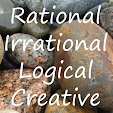A New York Times article from March 13, 2020 reports a possible US death toll for the virus ranging from 200,000 to 1.7 million people,
Between 160 million and 214 million people in the United States could be infected over the course of the epidemic, according to a projection that encompasses the range of the four scenarios. That could last months or even over a year, with infections concentrated in shorter periods, staggered across time in different communities, experts said. As many as 200,000 to 1.7 million people could die.These are disturbing numbers, no doubt. The article does, however, say that these numbers were from the end of February and do not take into account the measures currently being applied to mitigate the situation.
Taking these numbers as my guide, I started looking at some statistics. The most recent absolute numbers I could find for US mortality on the CDC website were for 2018. In 2018, the total mortality in the US from all causes was 2,839,205 (source). This is an increase over the previous year and our death rate has continued to increase, slightly, from 2008 to the present, according to Macrotrends.net. For a breakdown of the numbers among the top 10 leading causes of death, I had to look at the 2017 numbers (no idea why those are the most recent on the CDC website). These are the numbers I found:
Heart Disease = 647,457
Cancer = 599,108
Accidents = 169,936
Chronic lower respiratory disease = 160,201
Stroke = 146,383
Alzheimer's = 121,404
Diabetes = 83,564
Flu & Pneumonia = 55,633
Kidney disease = 50,633
Suicide = 47,173
A little perspective. The lower number of the estimate (200,000) would be more than those who died in accidents, but less than those who died of cancer or heart disease. If it was the higher of the estimated numbers, it would be comparable, though slightly below, the total of the top 5 causes of death combined. These are all staggering numbers, but at least now I have a little perspective of what those numbers actually mean.
I did find another article, this one from the Washington Post dated March 11, 2020, that had a much wider range in its estimate.
His team put together a simple table that looks at various scenarios using case fatality ratios ranging from .1, similar to seasonal flu, to .5, a moderately severe pandemic, and 1.0, a severe one. The infection rate ranged from 0.1 percent of the population to 50 percent. That put the range of deaths at 327 (best case) to 1,635,000 (worst case). The deaths would not necessarily happen over a month or a year, but could occur over two or three years, he said.What struck me (other than the wildly lower best case numbers) were that these deaths could take place over a period of 2 to 3 years. If it were the worst case scenario numbers but over 3 years, it would actually make it lower than the number of death from heart disease in that same period. Still a terrible loss of life, and I'm a firm believer in the "Ask not for whom the bell tolls, it tolls for thee" philosophy.
Hopefully a little perspective will help me to keep calm and carry on. But as Douglas Adam suggested, the last thing a person really needs is perspective...
[Upon putting his wife into his newly created "Total Perspective Vortex"] To Trin Tragula's horror, the shock completely annihilated her brain; but to his satisfaction he realized that he had proved conclusively that if life is going to exist in a Universe of this size, then the one thing it cannot afford to have is a sense of proportion. (The Restaurant at the End of the Universe p. 77)

No comments:
Post a Comment